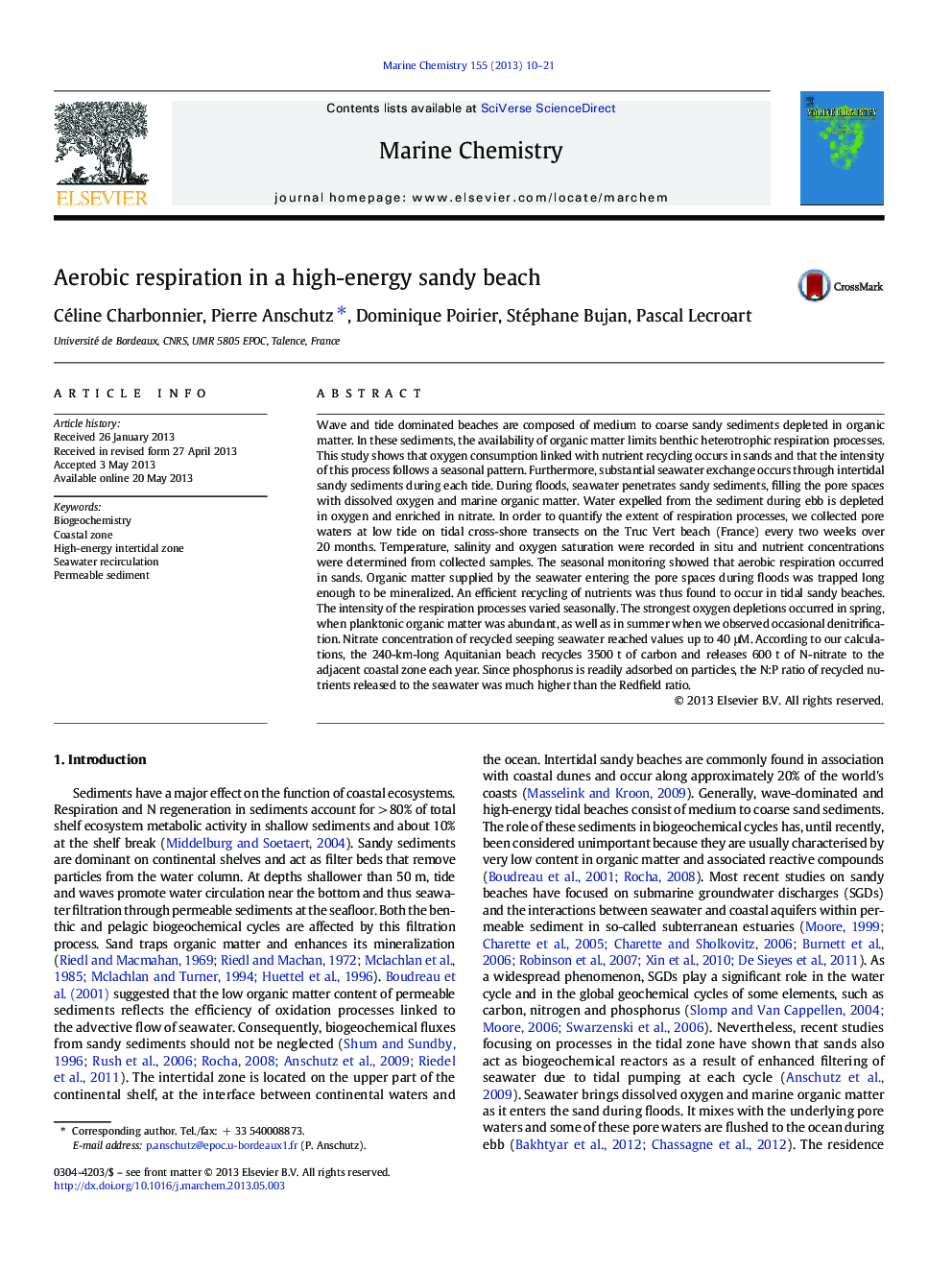| کد مقاله | کد نشریه | سال انتشار | مقاله انگلیسی | نسخه تمام متن |
|---|---|---|---|---|
| 7699679 | 1496680 | 2013 | 12 صفحه PDF | دانلود رایگان |
عنوان انگلیسی مقاله ISI
Aerobic respiration in a high-energy sandy beach
ترجمه فارسی عنوان
تنفس هوازی در ساحل شنی با انرژی بالا
دانلود مقاله + سفارش ترجمه
دانلود مقاله ISI انگلیسی
رایگان برای ایرانیان
کلمات کلیدی
بیوگرافی شیمی منطقه ساحلی، منطقه بینابینی با انرژی زیاد، گردش خون دریا، رسوب نفوذ پذیر،
موضوعات مرتبط
مهندسی و علوم پایه
شیمی
شیمی (عمومی)
چکیده انگلیسی
Wave and tide dominated beaches are composed of medium to coarse sandy sediments depleted in organic matter. In these sediments, the availability of organic matter limits benthic heterotrophic respiration processes. This study shows that oxygen consumption linked with nutrient recycling occurs in sands and that the intensity of this process follows a seasonal pattern. Furthermore, substantial seawater exchange occurs through intertidal sandy sediments during each tide. During floods, seawater penetrates sandy sediments, filling the pore spaces with dissolved oxygen and marine organic matter. Water expelled from the sediment during ebb is depleted in oxygen and enriched in nitrate. In order to quantify the extent of respiration processes, we collected pore waters at low tide on tidal cross-shore transects on the Truc Vert beach (France) every two weeks over 20 months. Temperature, salinity and oxygen saturation were recorded in situ and nutrient concentrations were determined from collected samples. The seasonal monitoring showed that aerobic respiration occurred in sands. Organic matter supplied by the seawater entering the pore spaces during floods was trapped long enough to be mineralized. An efficient recycling of nutrients was thus found to occur in tidal sandy beaches. The intensity of the respiration processes varied seasonally. The strongest oxygen depletions occurred in spring, when planktonic organic matter was abundant, as well as in summer when we observed occasional denitrification. Nitrate concentration of recycled seeping seawater reached values up to 40 μM. According to our calculations, the 240-km-long Aquitanian beach recycles 3500 t of carbon and releases 600 t of N-nitrate to the adjacent coastal zone each year. Since phosphorus is readily adsorbed on particles, the N:P ratio of recycled nutrients released to the seawater was much higher than the Redfield ratio.
ناشر
Database: Elsevier - ScienceDirect (ساینس دایرکت)
Journal: Marine Chemistry - Volume 155, 20 September 2013, Pages 10-21
Journal: Marine Chemistry - Volume 155, 20 September 2013, Pages 10-21
نویسندگان
Céline Charbonnier, Pierre Anschutz, Dominique Poirier, Stéphane Bujan, Pascal Lecroart,
